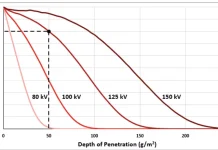By Rita Loof, director of environmental affairs, RadTech
RadTech International North America promotes the use and development of UV & EB processing as an industrial technique that offers energy savings, elimination of pollution, greater productivity, higher yields and the opportunity for improved, new or unique products. RadTech advocates on behalf of its members and the broader manufacturing community to shape governmental, environmental and regulatory policy which directly impacts use of raw materials in inks, coatings and adhesives and the awareness and promotion of UV and EB curing processes as green technology. Industries that benefit from this advocacy include printing; product decoration; packaging; structural bonding; and industrial finishing, coating and converting, among many others.
“Most users of UV and EB curing technology are unaware of how instrumental RadTech’s advocacy over the decades has been in faciliting uninterrupted use and expansion of the technology,” said Jennifer Heathcote, RadTech board member and business development manager for GEW Inc. “While none of this advocacy work is executed in secret, it does occur tirelessly in the background by a small, resilient and determined group of RadTech members with whom the rest of us are deeply indebted.”
Recently, RadTech became aware of an issue in Minnesota involving UV/EB technology and stepped in to advocate for the technology and for the company using it in its production processes.
RadTech submitted comments to the Minnesota Air Pollution Control Agency’s (MPCA) Intent to Amend an air permit that will enable a company to reduce emissions via the conversion of one of its coaters to a UV process. In collaboration with the RadTech Environmental Health and Safety Committee, the organization urged MPCA to approve the conversion. The public comment letter explained that, unlike conventional inks and coatings, UV/EB products do not evaporate. Instead, they are specifically formulated to react to UV energy or a beam of electrons. The nature of the process is such that virtually no volatile organic compounds (VOCs) are generated. Additionally, UV/EB processes are electric and do not produce combustion contaminants such as NOx, SOx and greenhouse gases.
RadTech’s letter highlighted the many regulatory accomplishments of UV/EB/LED technology. The South Coast Air Quality Management District, which has some of the most stringent air quality regulations in the nation, has recognized the sustainability advantages, including energy efficiency, of ultraviolet and electron beam curing technology. SCAQMD provides incentives to companies that convert to UV/EB through exemptions from permitting and recordkeeping.
The agency recognized UV/EB as Best Available Control Technology (BACT) for many industry sectors, and the technology has recently been included in the statewide BACT Clearinghouse for the California Air Resources Board. The California State Senate has adopted a resolution recognizing the benefits of ultraviolet and electron beam technologies and the contributions of RadTech. The proclamation acknowledges the “invaluable” contributions made by RadTech to the State of California and beyond, and it cites the association’s ideals of community service. It commends RadTech for its “outstanding commitment to improving the environment and economy through its programs.”
When communicating with the Minnesota agency, RadTech expressed concern that the MPCA overestimated emissions of particulate matter (PM) from the project. MPCA analysis assumes that PM is generated during the spray application, prior to cure (open time). The coating is not expected to remain uncured for long periods of time, and assuming that the spray nozzles will be in a constant spray mode is unrealistic. The UV coating proposed has a viscosity of 25,000 centipoise, making it extremely unlikely – if not physically impossible – for the material to be aerosolized into a particulate form during the spraying operation.
To put this into perspective, the South Coast Air Quality Management District has exempted materials with a viscosity of 200 centipoise or greater from some of its rules (Rule 1168—Adhesives) in recognition that these materials do not generate emissions.
The RadTech letter stated, “It is our understanding that most of the coating will end up on the actual parts (battery terminals). The rest will be collected on the table underneath the sprayers. Any excess will be removed on a regular basis. Thus, assuming that any potential overspray will go out of the facility and emitted to the atmosphere unfairly penalizes the UV process and ascribes to it emissions which do not exist.”
RadTech believes that the 5% PM emission factor assigned to the coating usage is inaccurate. In many cases, VOC emissions, by their very nature, are expected to be higher than PM emissions. This is especially true for high-viscosity materials. In a worst-case scenario, in the absence of any data, SCAQMD uses an emission factor of 2% for VOC emissions associated with UV operations.
RadTech further commented that the title of “100 percent solids” may be misleading in that it can somehow imply that there are solids being emitted. The reference means that the materials in a UV formulation are designed to cross-link in such a way as to remain entrapped on the substrate, with no emissions to the atmosphere.
RadTech urged MPCA to revise its emission calculations for PM to reflect a more realistic view of the process. The organization is concerned that these inflated emission numbers can unnecessarily alarm a community that already is sensitive due to unfortunate past events at the facility.
“With UV/EB technology, facilities can achieve emission reductions above and beyond those required by even the most stringent of regulations. There is no need to install air pollution control devices, which may emit combustion contaminants such as nitrogen oxides or sulfur oxides. The products do not contain toxic air contaminants and have no secondary adverse impacts such as emissions of greenhouse gases,” stated the letter sent by RadTech.






